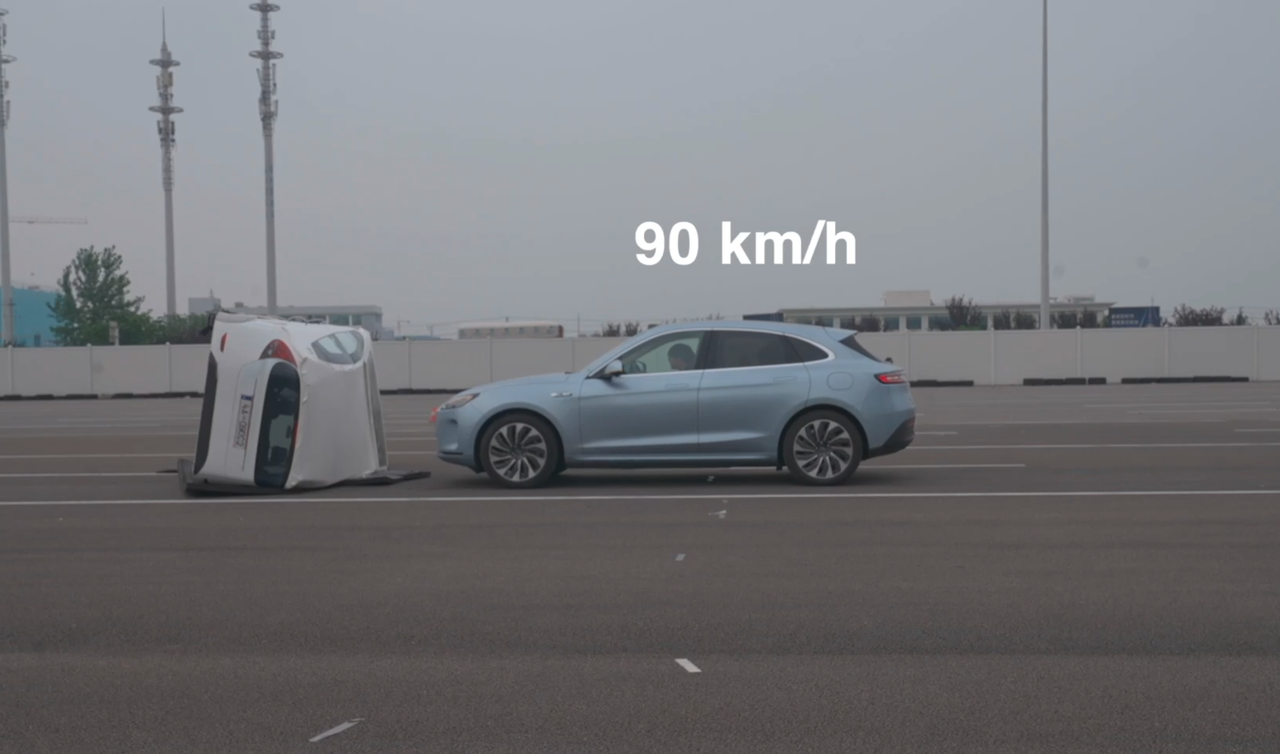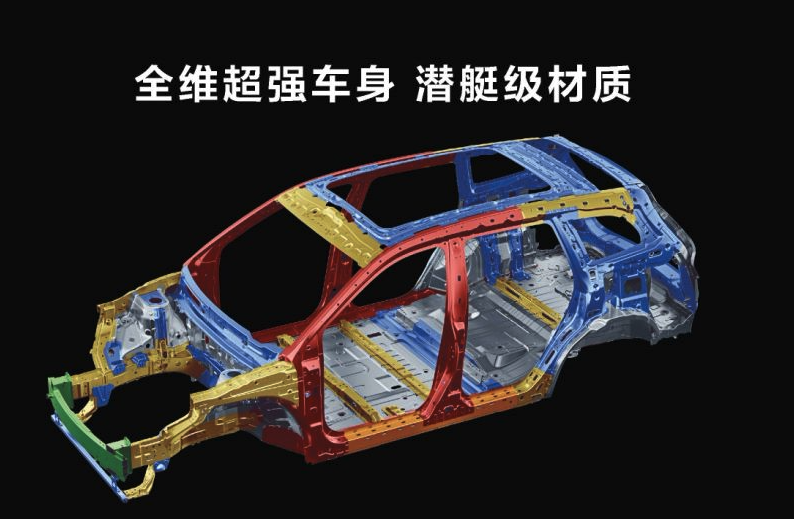When Richard Yu announced that Huawei’s advanced intelligent driving will be available nationwide by the end of the year, without relying on high-precision maps, cheers erupted at the “AITO” new M7 launch event, especially for “a step ahead”.
Although this news had been circulating even before the event, once confirmed by Richard Yu himself, there was an unstoppable wave of cheers from the audience.
After all, facing the fierce arms race of advanced intelligent driving into the city, other competitors are still conducting a slow siege war measured in ‘cities’.
Huawei plants the trees, “AITO” enjoys the shade. For the “AITO” new M7, before activating nationwide map-free advanced intelligent driving by the end of the year, “AITO” new M7 has already made a significant impact in the market, regardless of any potential surprises. This influence has brought immediate returns to the “AITO” new M7 – on the first day of launch, it received over 15,000 orders.
And to achieve such remarkable results as “AITO” new M7 now, Huawei, as the steady supporter in the background, has indeed demonstrated its technical strength in intelligence and electrification.
Investment in root technology is a head start on the future
The newly unveiled “AITO” M7 is a powerful manifestation of Huawei’s many years of technical layout, especially at the root technology level.
At the intelligent technology exchange meeting prior to the “AITO” new M7 launch event, Wang Yanmin, Huawei’s terminal BG intelligent car business division president stated:
As all future certainty lies in all these underlying technologies, which we call root technologies, only by making solid investments in root technologies, can we achieve a lead in future technologies, and only by being ahead in technology can we lead in products.
Indeed, the root technologies Wang Yanmin mentioned refer to the profound accumulations that Huawei has made in OS, AI, ecological chains, and many other aspects since entering the ICT field.
And it is precisely this deep accumulation of root technologies that allows Huawei to rapidly project its energy onto products and form a leading advantage once it enters the smart car field, especially in intelligent driving which is cared about more and has a stronger user perception.
At present, automakers are all making efforts to roll out advanced intelligent driving, however, to achieve advanced intelligent driving, the first step is to allow cars to properly perceive and understand the physical information of the outside world.
But a common difficulty facing automakers nowadays is that the perception systems of most cars can only perceive and understand more conventional things like people, cars, etc.
Yet, driving conditions are ever-changing, there might be fallen large trees after the wind and rain, or rocks fallen from a dump truck passing by… How should a car respond to such unusual situations?
Faced with this problem, Huawei’s solution is GOD (General Obstacle Detection) 2.0.
In addition to the perception and understanding of regular entities, such as humans and vehicles achieved by integrating BEV network with GOD Network, GOD 2.0 also incorporates open set attribute recognition, equipped with continuously supervised learning ability for novel elements.
In detail, GOD 2.0 possesses the ability to recreate past driving scenarios in 3D, to detect all physical information present in the scene, such as trees, isolation bars, road edges, or other obstacles.
After detecting all physical information, GOD 2.0 captures the traffic trajectory data from the driving scenario, learning how to navigate the road accurately and which obstacles need to be avoided. It then generates a abundant amount of simulated training data, continually enhancing its perception and understanding of unusual entities.
Regarding the actual capabilities of GOD 2.0, the Director of Huawei’s intelligent driving products, Miao Junhai, stated:
GOD 1.0 makes ADS safer, GOD 2.0 makes ADS more human-like.
Miao Junhai offered examples to elucidate the actual recognition abilities of ADS based on GOD 2.0.
Proactive + Passive, Fear Not for Fortifying Safety
The significant attention Huawei has committed to the development of GOD 2.0 is due not only to making ‘ADS more human-like’, but more importantly, as one of the core technologies of Huawei ADS 2.0, GOD 2.0 greatly contributes to enhancing safety.
According to Huawei, the new AITO M7 equipped with Huawei ADS 2.0 can accurately recognize unconventional obstacles such as overturned cars, cardboard boxes, water horses, curbs, and barriers.
Moreover, in the presence of an obstacle detected straight ahead, it can activate AEB emergency braking-at a maximum speed up to 90 km/h; when a collision risk is detected laterally with barriers, it can initiate ELK to correct vehicle driving direction promptly, providing comprehensive protection.
Furthermore, Huawei ADS 2.0 also extends emergency braking to low-speed driving situations, reducing the risk of scrapes or slipping for users when driving at low speed.

Additionally, the ADS 2.0 of the new {“问界”:”AITO”;} M7 by Huawei adopts a combination of ‘LiDAR + visual perception’ smart driving solution. The newly-added roof-mounted LiDAR offers a longest detection range of around 200 m and a maximum horizontal detection angle of up to 120°. Facing ‘ghost probes’ or entering a tunnel with unpredictable light conditions, the AITO M7 can sense the environment in advance, thus slowing down or avoid danger.Of course, these are all the active safety capabilities of the new ‘Ask The World’ M7 based on Huawei’s ADS 2.0. However, for a vehicle, not only must it avoid collisions but also withstand impact when it happens.
Therefore, in addition to active safety, Huawei has also redesigned the car structure of the new ‘Ask The World’ M7, significantly enhancing its passive safety capacity.
Firstly, regarding materials, the new ‘Ask The World’ M7 uses submarine-grade hot-formed steel, accounting for 24.4% of the whole, with high-strength steel and aluminum alloys taking up an additional 80.6%. Simultaneously, CBS composite body materials are incorporated in the A and B-pillars, which not only upgrade body durability, stiffness, and collision safety performance, but also reduce body weight.

Next, on body structure, the new ‘Ask The World’ M7 executes a cage-style design and introduces a dual anti-collision beam layout on the frontend. Hot-formed steel is used for fortifying both sides of the battery pack, that effectively disperses the blunt force absorbed by the car’s main body during a collision, therefore reducing passenger-risk, and risk of secondary hazards owing to battery damage.
Lastly, within the cabin, the new ‘Ask The World’ M7 standard suite comes with eight safety airbags which encompasses the main co-driving safety airbag, front side airbags, left and right side curtains as well as second-row side airbags. Moreover, they are equipped with high-performance dual pre-tensioned safety belts for the front row.
Clearly, from active to passive safety, from the body to the cabin, Huawei has upgraded the new ‘Ask the World’ M7 in all aspects of safety.
According to China Automotive Research Super Crash test data, when a 4-ton truck collides with the new ‘Ask The World’ M7 at 40 km/h and 60 km/h respectively, the M7’s overall structure remains intact. The A-pillar, A-pillar upper beam, and rear body appearance show no obvious deformation, and all four doors can still be opened normally.
In terms of safety, the new ‘Ask the World’ M7 has seen a significant improvement over its older version.
Harmony 3.0 era, upgraded rear seat experience
After two years of iterative development, HarmonyOS intelligent cockpit embarks on its 3.0 era with the new ‘Ask the World’ M7.
On HarmonyOS intelligent cockpit 3.0, with its core system ‘Harmony,’ Huawei further eliminates the boundaries amongst various hardware devices, enabling them to collaborate and form a super terminal.
On this super terminal, mobile-vehicle touch transfer isn’t merely a unique feature of navigation. Most leading applications like Douyin, Kuaishou, Weibo and, WeChat will all support this feature. It could even transfer gameplay or drone control from the phone to the control screen, providing a seamless transition from small to larger screens.
Another significant change on HarmonyOS intelligent cockpit 3.0 is the back cabin which supports two Huawei Pad screens, main purpose of which is to grant the experience of ‘Passenger-Driver parity,’ according to Huawei.
During a technical seminar, Huawei pointed out that despite the presence of screens in both front and rear sections of many car models, “consumers lack more convenient and flexible solutions for rear entertainment screens.” Consequently, the solution of incorporating two Huawei Pad screens in the back seats was born.
As the name implies, these two Huawei Pad screens function as Huawei Pads, enabling users to carry out tasks, enjoy entertainment, and play games at their leisure. More interestingly, Huawei has harnessed the latest MagLink technology in combination with distributed soft buses to connect the central control screen with the two Pad screens.
In this setup, the central control screen serves as the core of the three screens, precisely determining which Pad screen is on the left or right, and then viewing and controlling the content displayed on the Pad screens. Furthermore, the content transfer rate is as high as 160 MB/S, with end-to-end latency below 40 ms, and audio-visual synchronization latency within a range of -50ms to 20ms.
This implies that when a family or a group of friends travel together, passengers in both the front and rear seats can concurrently watch the same movie or play the same online game without worry of screen synchronization disrupting their experience.

Besides, if there are children in the back seats, parents can use the central control screen to control the Pad screens, helping children find videos, songs, and adjust the sound and brightness. If they decide the child has had enough screen-time, they can use the central control screen to turn off the Pad screen.
It is noteworthy that on Harmony Smart Cockpit 3.0, Huawei has not only become smarter in visible areas like screens but also in invisible areas.
Harmony Smart Cockpit 3.0 possesses a robust sensing ability. Upon boarding, it can automatically recognize the user’s height ratio and adjust the seat, HUD, rearview mirror, etc., to an optimal position.
Some manually performed tasks, guided by user intuition, have been replaced by algorithm and model solutions in Harmony Smart Cockpit 3.0.
In summary, the Harmony Smart Cockpit 3.0 in AITO’s new M7 is not only user-friendly and rich in features as before, but also covers more usage scenarios and even extends outside the vehicle, rendering intelligence pervasive and readily accessible.
Bottom Line
Huawei ADS 2.0, Harmony Smart Cockpit 3.0, newly formed safety measures, a starting price of 249,800… The robustness of AITO’s new M7 is plainly more potent, and its pricing, significantly more competitive.
In addition, the ‘AITO’ new M7 presents a characteristic that fits well with Chinese demands —— ample space. The ‘AITO’ new M7 has a 5,020 mm long body and a 3,338 mm long interior effective space, which has even surpassed the ‘LI’ L7 Max.
This means that with an expenditure of 250,000, consumers can own a high-end intelligent vehicle with full-size SUV space, meeting the needs of the whole family; and with 300,000, they could experience Huawei’s advanced smart driving nationwide by the end of the year. Among vehicles of the same level, the competitiveness of the ‘AITO’ new M7 cannot be underestimated.
Empowered by Huawei, ‘AITO’ has indeed started to come alive.
The reason why ‘AITO’ is so powerful as it is today is closely connected to its backing by Huawei, and its own emphasis on rapid and high-quality product iteration.
Moreover, a brutal battle for sales volume and scale is taking place in the new energy vehicle market. If ‘AITO’ wants to break through this battle, it has to provide stronger value and product power than its competitors. In a word, ‘AITO’ needs a smash hit.
As for how to create this smash hit, the ‘AITO’ new M7 might be the answer that ‘AITO’ presents to the market.
This article is a translation by ChatGPT of a Chinese report from 42HOW. If you have any questions about it, please email bd@42how.com.
